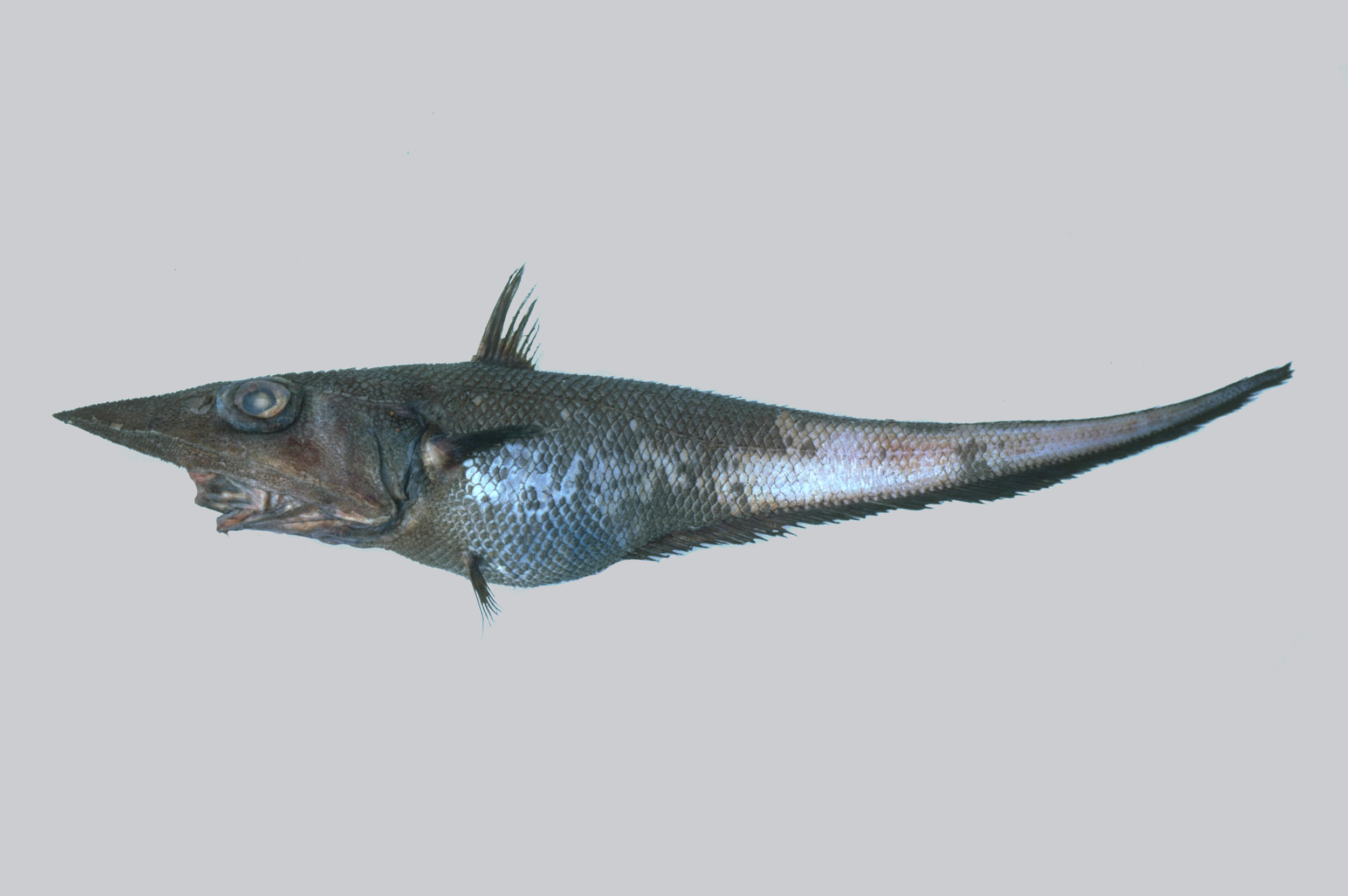- Classification
- ACTINOPTERYGII
- GADIFORMES
- MACROURIDAE
- Coelorinchus
- macrorhynchus
Bigsnout Whiptail, Coelorinchus macrorhynchus Smith & Radcliffe 1912

A Bigsnout Whiptail, Coelorinchus macrorhynchus, trawled SE of Kiama; depth 485-925 metres. Source: Ken Graham / NSW Fisheries. License: All rights reserved
Bigsnout Whiptail, Coelorinchus macrorhynchus Smith & Radcliffe 1912
More Info
|
Distribution |
Tropical eastern Indian Ocean and Western Central Pacific off the Philippines, Borneo and Australia; bathydemersal on the continental slope at 329-759 m. |
|
Features |
D II, 8-9; P i16-19; V 7; GR (inner) 8-10; BR 6; PC |
|
Size |
A relatively large species reaching a total length of more than 44 cm. |
|
Colour |
Overall swarthy to black; fins, mouth, and gill cavities blackish; gums, gill arches, and rakers dark or blackish, peritoneum black; most of the spinules of head and body scales black. |
|
Biology |
Unknown. |
|
Fisheries |
Of no commercial imortance. |
|
Conservation |
Not assessed. |
|
Species Citation |
Coelorhynchus macrorhynyhus Smith & Radcliffe in Radcliffe, 1912, Proc. U.S. Natl. Mus. 43(1924): 127, pl. 29(1), Verde Island Passage, Luzon, Philippines. |
|
Author |
Bray, D.J. & G. Frankham |
Bigsnout Whiptail, Coelorinchus macrorhynchus Smith & Radcliffe 1912
References
Bray, D.J., D.F. Hoese, J.R. Paxton & J.E. Gates. 2006. Macrouridae (pp. 581-607). In Hoese, D.F., D.J. Bray, G.R. Allen, J.R. Paxton, P.L. Beesley & A. Wells (Eds.) Zoological Catalogue of Australia. Volume 35. Fishes. CSIRO Publishing & the Australian Biological Resources Study (ABRS), 3 vols., 2248 pp.
Iwamoto, T. 1999. Order Gadiformes. In Carpenter, K.E. & V.H. Niem. Species identification guide for fisheries purposes. The living marine resources of the western central Pacific. Batoid fishes, chimeras and bony fishes part 1 (Elopidae to Linophrynidae). FAO, Rome.
Iwamoto, T. & Graham, K.J. 2001. Grenadiers (Families Bathygadidae and Macrouridae, Gadiformes, Pisces) of New South Wales, Australia. Proc. Calif. Acad. Sci. 52(21): 407-509, figs. 1-114.
Iwamoto, T. & Williams, A. 1999. Grenadiers (Pisces, Gadiformes) from the continentalslope of western and northwestern Australia. Proc. Calif. Acad. Sci. 51(3): 105-243, figs. 1-58.


